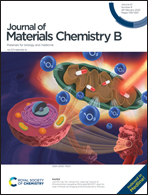A coumarin-based fluorescent probe with 4-phenylselenium as the active site for multi-channel discrimination of biothiols†
Abstract
Biological mercaptans, also known as biothiols, play their own roles in a number of important physiological processes, and the abnormal levels of biothiols are closely associated with a variety of diseases. Therefore, the selective detection of biothiols in biological systems is crucial for understanding their roles in physiological processes and the early diagnosis of diseases. In this article, we developed a coumarin-based fluorescent probe (CouSePh) with 4-phenylselenium as the active site for the discriminative detection of all three biothiols. By introducing 4-phenylselenium as the active group, the probe CouSePh exhibits a rapid and sensitive response to three biothiols. For all three biothiols, the first-step sensing reaction is the nucleophilic substitution of 4-phenylselenium by the thiol group of biothiols, and they subsequently undergo three distinct intramolecular reactions to form three sensing products with different fluorescence emissions. The sensing mechanisms of the three biothiols have been demonstrated by spectral measurements and the analysis of high resolution mass spectrometry as well as the separation and characterization of the sensing product. Furthermore, by two-channel fluorescence imaging, probe CouSePh has been successfully applied in the discriminative detection of endogenous biothiols in living cells.



 Please wait while we load your content...
Please wait while we load your content...